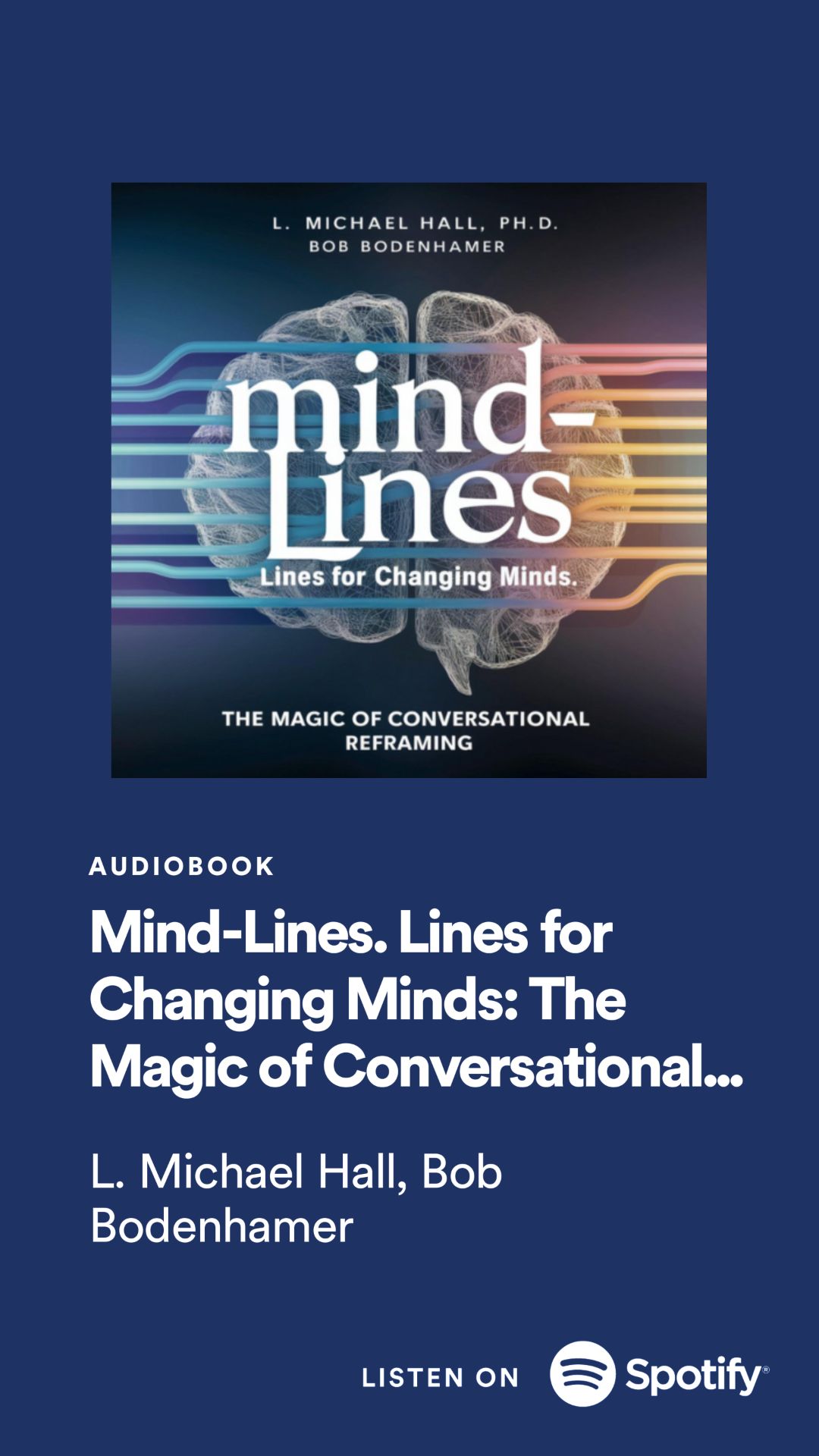This post is from MentalHealth.net
The author is Bruce Ecker, M.A., L.M.F.T. is co-originator of Coherence Therapy and a founding director of the Coherence Psychology Institute. He is coauthor of many clinical publications including the volumes Depth Oriented Brief Therapy: How To Be Brief When You Were Trained To Be Deep and Vice Versa and the Coherence Therapy Practice Manual and Training Guide. He is a frequent presenter at major psychotherapy conferences and an internationally sought clinical trainer who has taught in graduate programs for many years. He has been in independent psychotherapy practice in the San Francisco area for over 25 years, prior to which he was a research physicist for fourteen years.
The brain’s process of reconsolidation is the recently discovered and only known form of neuroplasticity capable of actually erasing the neural circuits that store ingrained emotional learnings.
Emotional learnings drive the majority of unwanted behaviors, moods, emotional reactions and thoughts for which people seek help in therapy. Clinicians and their clients work hard trying to get the upper hand against the formidable power of panic attacks, harmful attachment patterns, bouts of depression, compulsive eating, rage, sexual inhibition, shame and low self-worth, to name but a few forms of expression that emotional learnings have. Such learnings rarely show up directly in conscious awareness, but switch on when current circumstances contain features that evoke them.
The remarkable tenacity of emotional learnings across decades of people’s lives, while a bane to psychotherapists and their clients, is a result of how evolution apparently crafted the brain: any learning accompanied by strong emotion becomes stored in specialized, “implicit” memory circuits that are exceptionally durable. So tenacious are they that throughout the 20th century, right up until the recent discovery of reconsolidation, memory researchers believed that emotional learnings were indelible for the lifetime of the individual. Neuroscientists had concluded that once the brain locked an emotional learning into long-term memory through a process known as consolidation, it threw away the key.
Certainly emotional learnings could be suppressed temporarily in various ways, such as when an exposure procedure suppresses fear learnings through the process of extinction. However, it was clear that such measures do not actually unlock, change or erase the original emotional learning. Rather, they only create a second, new learning that competes against and can override the first under ideal conditions, but usually not for long under real-life conditions. Relapses are almost inevitable. The extreme durability of initial emotional learnings is one of the biggest causes of suffering in human life, and we were forever stuck with that affliction, or so it seemed.
A major reversal in the neuroscience of memory
Neuroscientists’ discovery in 1997 and their confirmation by 2000 of a process that does, after all, truly unlock and revise or even erase specific emotional learnings was therefore a major breakthrough. Researchers have shown that emotional memory circuits can be unlocked out of their consolidated state and, while still unlocked, can be altered by new learning within the following five or six hours, after which the neural circuits of the altered learning are again locked (reconsolidated) into a stable state. This is fundamentally different from extinction, which does not unlock the original learning.
The seemingly solid tenet of indelibility had crumbled. The vault of emotional memory comes with a key, and that key has been found. Early emotional conditioning need not be a life sentence. Brain scientists have now demonstrated that as soon as a particular bit of emotional learning has been erased, the responses of emotion and behavior that it had been generating cease immediately and effortlessly, and cannot be retriggered.
Furthermore, only the specific, targeted emotional response is affected, with no loss of corresponding factual or autobiographical memory.
The potential of reconsolidation for bringing psychotherapy to a whole new level of effectiveness is clearly enormous. If, based on knowledge of how reconsolidation works, therapists could reliably help people to revise or erase trouble-making emotional learnings, the alleviation of suffering and the enhancement of well-being achieved by psychotherapy would increase dramatically beyond the modest levels, on average, that we now assume to be inevitable.
Any system of therapy that reliably achieves reconsolidation should pierce through the long-standing, shared ceiling on efficacy measured across therapies, literarily nicknamed the Dodo bird verdict by outcome researchers. Reconsolidation is a real candidate for a powerful “specific treatment effect,” a verifiable therapeutic effect over and above the “non-specific common factors” of empathy, trust, etc. in the therapist-client relationship.
The key question is: Have neuroscientists identified a well-defined process or series of steps that can be carried over into psychotherapy? Happily, the answer is yes.
The steps of the reconsolidation process
Importantly, the reconsolidation procedure requires detailed knowledge of the emotional learning to be erased. Emotional learnings contain not only the living memory of the sufferings or pleasures a person experienced, but also the self-protective, adaptive tactics and the models of the world that were formed as a result of those experiences.
In laboratory studies, neuroscientists first create the target emotional learning that they then erase, so they know its makeup. For example, by pairing the appearance of a colored square on a screen with a mild shock to the wrist of each volunteer subject, researchers created the learned model that the square is followed by a shock, and then the presence of this learning was measurable via skin conductance as a response of fear upon seeing the square.
Whereas neuroscientists know those details from the start, therapists of course do not know the usually complex, deeply vulnerable emotional learning underlying a new client’s presenting symptom. Therefore, any therapy of memory reconsolidation necessarily begins with pre-steps not required in the reconsolidation research, in order to acquire the needed information:
A. Learn from the client what to regard as the presenting symptom (specific behaviors, emotions, thoughts).
B. Retrieve into explicit awareness the implicit emotional learning, including its model of reality, underlying and driving the presenting symptom. (There may be more than one such implicit emotional learning underlying a given symptom.)
C. Identify a vivid experience available to the client that imparts a living knowledge fundamentally incompatible with the model of reality in the target emotional learning, such that both cannot possibly be true. This may be something already in the client’s living knowledge or a new experience created for this purpose.
Accomplishing these three preparational steps in fact is usually the far greater part of the work. These steps must be truly experiential, not just cognitive insights. While many different techniques and ways of working may be used for these steps, they require skill, focus, sensitivity and empathy in order to bring to light key areas of clients’ rich, complex and tender inner worlds.
Once these steps are well in place, it is then possible to carry out the sequence identified by reconsolidation research to accomplish erasure. This sequence typically is brief:
1. Reactivate the target emotional learning, and while it is being strongly experienced emotionally and somatically-
2. Activate vividly the incompatible knowledge or experience. It is this step, an experience of something utterly contradictory of the target learning while the latter is activated, that unlocks the synapses of the target emotional learning. Note that reactivation alone (step 1) does not unlock or destabilize the target learning (contrary to what some writings on reconsolidation state). Results from at least four different neuroscience labs have confirmed this. Destabilization occurs only after reactivation plus step 2: a single, concurrent, contradictory experience that mismatches what the reactivated target memory expects. This is experienced subjectively by the person as an edgy, experiential dissonance because both cannot possibly be true, yet both feel true. With the memory circuits of the target learning now unlocked-
3. Guide attention alternately to the target learning and the incompatible knowledge several times, so that the two are experienced concurrently, side by side, for a few minutes. In this step, the contradictory knowledge serves as a new learning that disconfirms the target learning and “rewrites” its memory circuits, so that the original emotional learning no longer exists (though memory of personal experiences is unaffected). This is experienced as a deep unlearning and profound release, felt bodily, of the emotional grip of the original learning.
Toward a new, integrative framework of psychotherapy
This entire erasure process of six steps, A-B-C and 1-2-3, can be carried out by therapists using their own personal styles and choices of experiential techniques from a large range of possibilities. The process is a theory-independent, universal meta-process, and as such it can richly foster psychotherapy integration.
Imagine, for example, practitioners of EFT (Emotionally Focused Therapy) and practitioners of EMDR (Eye Movement Desensitization and Reprocessing) comparing notes on how their very different therapeutic methods can accomplish the same six-step process, which itself is not the possession of any one therapy system. A shared recognition of that process would give therapists a universal framework, allowing practitioners of diverse therapy systems to compare notes in a meaningful manner, without which they would tend to be comparing apples and oranges.
Explicit awareness of the erasure process would enable therapists to shape the use of their preferred methods so as to fulfill all of the steps decisively, making therapeutic breakthroughs more reliable and frequent. Without awareness of those six steps, fulfilling them and achieving erasure is a matter of hit or miss through luck or intuition, and therefore is considerably less frequent. Because reconsolidation is the only known neurological process that decisively can eliminate a specific emotional response, it may be that any deep, lasting cessation of an emotionally-based response, whenever observed in any type of therapy, is due to this six-step process occurring, with or without the therapist’s recognition.
Therapy systems that are heavily committed to a methodology of extinction, exposure and counteracting, such as CBT (Cognitive Behavioral Therapy) do not appear to be well suited to carrying out the erasure process. As a rule, counteracting “de-retrieves” the target emotional learning, keeping it in an unconscious state where it is not directly experienced and therefore is unavailable for change. In contrast, the erasure process is completely non-counteractive throughout: the target learning and the incompatible knowledge are given completely equal regard and acceptance by the therapist. To refer to the target learning as “irrational,” “maladaptive,” “dysfunctional” or otherwise “wrong” in some way tends to register with clients as a counteractive message that derails the process.
I have been using the six-step erasure process in my practice daily for almost 20 years (in addition to training many other therapists to do so), well before reconsolidation was discovered in neuroscientists’ labs. My colleague Laurel Hulley and I converged upon exactly this process in the early 1990s as a result of closely studying a great many of our own clients’ sudden, deep breakthroughs and searching for elements of process always present in such major shifts. We began teaching this process to therapists in 1993 and described it in our 1996 book, Depth Oriented Brief Therapy, and in later writings. The Thanksgiving holiday of 2005 was the unforgettable moment when I began studying the reconsolidation research and learned it had identified the same process, point for point. That the same process for erasing emotional learnings had been discovered independently through such dissimilar pathways seemed remarkable and yet most natural. After all, the subjective, emotional domain and the neural, biochemical domain are two sides of the same coin–facets, windows, of the same jewel.
Of course, we must await rigorous, controlled studies to know for certain whether our use of this process in the complex milieu of psychotherapy does indeed induce reconsolidation, but the circumstantial evidence for that is extensive and compelling: matching steps of process, abrupt, lasting cessation of symptoms, and disappearance of previously strong, specific emotional reactions–the same results which our neuroscientist colleagues report. After almost two decades of learning how to guide therapy clients through the erasure process, we have seen much suffering dispelled and have accumulated a large body of clinical know-how. Neuroscientists have so far (as of this writing in January 2011) applied the process only to the simplest learned fear, whereas we have applied it successfully in the clinical setting to complex emotional learnings underlying a wide range of symptoms, including those mentioned at the beginning of this article.
A clear methodology and a comprehensive set of techniques, guidelines and principles, all now known as Coherence Therapy, have been developed, explicitly guiding all six steps and moving through the emotionally deep process efficiently (but without making any sacrifices of empathic attunement to the client) to dispel symptoms and problems in individual, couple and family therapy. Complications that can occur at each step, such as resistance, are also covered in the Coherence framework. An additional step, addressing verification of erasure, completes the process, as in the lab studies.
See below for more about memory reconsolidation:
Unlocking the Emotional Brain: Eliminating Symptoms at Their Roots Using Memory Reconsolidation

























This kind of therapy is really fascinating. There’s a new TED talk on this too and it seemed extremely interesting.